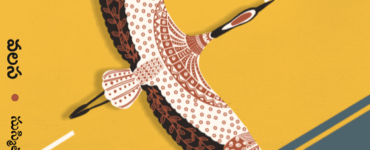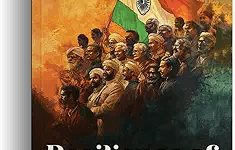The Canvas, the third of the tetralogy planned by my uncle (late) RS Krishna Moorthy and me, is finally before you in spite of some hiccups. It is a matter of great satisfaction that we are able to include a good number of women writers in this volume which we could not do in the earlier books, The Palette and TheEasel, for reasons beyond our control. Our sincere thanks to all the women writers of this volume for their permission to translate their stories and include them here. We also place on record our indebtedness to the other writers and their heirs for the stories included here.
Though the span of the stories is fairly large, the spectrum of stories presented in this volume still reflects a smack of current trends and movements in the realm of Telugu short story. As translators our selection is more focused on the content than on the styles and movements.
The “FifthWall” by Kalpana Rentala brings out subtly, that however forward looking we may suppose we are in our thoughts and actions, there may still be some crippling inhibitions lying within us that need to be identified and overcome. Until then, the smack of change perceived, whether in our societal or personal outlook, will remain just wafer thin.
“Kalapi” (Peahen) by Mannem Sindhu Madhuri, in a way, is a fluent lyrical odyssey recounting the angst of a soul thirsting for the aesthetic (Sundaram) of life which takes the ‘Experience of Life’ (Satyam) resulting from such a quest to be an enduring saga and not a one-time experience.
Though P. Satyavathi seems to apparently deal with the challenges of a young adolescent girl stigmatized by her mother’s elopement, in “Damayanti’sDaughter” she in fact tries to address the nagging question in man-woman relationship under the institution of marriage: Should a woman put up with the insufferable personal relation with her husband perennially, sacrificing her will in the name of allegiance to the institution, or, has she the liberty and freedom to come out without the burden of consequences to herself and the other stakeholders involved in it? Is marriage such an inalienable social contract which has the power of a statute or a covenant between two parties that the obligation to respect the contract ceases automatically when one of the parties fails to keep the all-important terms? Surprisingly, KN Malleswari in “A Protean Beauty” addresses the same conflict, but this time between two live-ins, who do not have that institutional burden hanging over their heads and treats it in a different perspective.
It’s indisputable that in a male chauvinistic society, societal justice is a dice heavily-biased against women. In the case of atrocities like rape and abuse of a girl, an individual’s thinking, including some women’s, is conditioned consciously or subconsciously by the perception of the contemporary society. Kuppili Padma in “Ajeya” exposes the hollowness of society’s skewed and overt prejudice against such innocent victims, who are twice victimized.
In the magical realism story “Sanjeevarayudu” where narration toggles between past and present, Mythili Abbaraju brings out the subtleties of the technique to the fore in the backdrop of the conjugal life of a Poet Laureate. A young doctor (protagonist) who was a devout fan of the Poet Laureate – particularly his centum of poems in memory of his young scholarly wife, the first critic of his earlier popular works – comes to know in a chance encounter of time-interplay that she died of consumption and that the naturopath Poet Laureate was averse to administer allopathic medicine. The young doctor travels back in time to appeal to the Poet Laureate and convince him of the allopathic cure of consumption and that he could treat her and prolong her life (so that his later works would have the benefit of her critical appreciation).
We are witness to the misfortune and helplessness of innocent all-trusting victims … children whom mother poisons and girls whom father sells off for money. In “A Letter to Mother” Manasa Yendluri presents how money corrupts even the primal bond between a mother and child. The story touches upon the cruel facts underlying the life of the victim deliberately led into a brothel.
The two short stories… “My Goal is to be on the Move” by Madhu Pemmaraju and “The Gun” by Sankagiri Narayana Swamy … included in this volume prove that the expatriate Telugu short story has come of age. It has moved away from the hackneyed, nostalgic, sentimental angst and alienation from the motherland and its substance is firmly rooted in the ambience of the adopted country. The land, language and climate might change across the globe but the basic human passions and yearnings remain the same wherever you go. While Madhu describes a memorable day in the life of a cab driver who bears witness to the nostalgic journey of a lone granny through the places and people of her life before she ultimately enters an old age home, Narayana Swamy presents with equanimity and finesse a very seething and explosive problem of ‘Gun Culture’ in the American society that has percolated to elementary school level. We always expect our offspring to uphold basic human values and continue where we left off in firmly establishing a sane society that offers equal opportunities to all human beings without discrimination.
Religion is an instrument of faith to unite people for common good. But when obeisance to religion transcends its limits, it corrupts the mind and people subvert the basic tenets behind such faith. Afsar Mohammad’s “Death of Mustafa” succinctly brings out how religious fanaticism turns devotees proclaim themselves to be Babas and Godmen and how they deliberately weave myth around themselves and what they do. In a spiritually degenerate society God reduces more to a symbol of fear and vengeance than being a source of love and forgiveness.
In “A Stammerer’s Soliloquy”, Medico Shyam bares out how the society ridicules the stammerers, just for the inability to pronounce a word properly, but blissfully ignores more serious disabilities, like the incompetence to distinguish between good and bad and not keeping one’s promise.
The first Jnanpith awardee in Telugu Viswanatha Satyanarayana was a master wordsmith who left no genre untouched, nor any attempt unadorned. Published almost 70 years back, “Death Sentence” is a touching soliloquy of a poor innocent helpless victim implicated by the police in a crime he did not commit, exposing that the nature of the custodians of law has not changed but for the color of their skin or uniform. The writer asks a searching question: If killing is a crime, how can one make a distinction between a stone and a bullet?
Children are often the soft targets of anger and frustrations of parents and are sometimes treated as a second chance to re-live their forgettable childhood failures. Taking a cue, Vempalle Sharif weaves a gripping surrealistic story “ArmStump”.
History is not only a chronicle of the victorious and their grandeur but also a barometer that glaringly exposes the extent of man’s failure to remain human. Posited in the era of the Nizams of Hyderabad Deccan, “Father! I am afraid it’s Tiger” by Devaraju Maharaju is a heart-rending story of a poor farmer and his son forcefully commissioned to take guard during a Nizam’s visit to their village.
There is no dearth of legends about the hypocrisy of ‘Bhaskaram-like’ sham intellectual giants in any era. They put on airs of intellectual superiority and critical acumen and dole out unsolicited advice to everybody else and under any situation. But, when they end up in a challenging situation themselves they fail to translate their own advice into effective action, and will look out for a convenient excuse to wriggle out of it. Chandu Subba Rao satirizes one such pseudo intellectual in his story “The Intellectual”.
Man is sometimes racked with an insatiable curiosity about his future and the past. He knows fully well that he can neither influence the former nor erase the latter. Yet he doesn’t desist from hunting after the mirage. B V Ramana Rao in “Lead Us into the Righteous Path” gives one such interesting peep.
Buchi Babu (Sivaraju Venkata Subba Rao) represents a class of scholastic writers of yesteryears with a sound exposure and grounding in English and Telugu classic literature. He contends that the exclamatory “Ah’s, Uh’s and Oh’s” are not just fillers of our conversation but convey something more and explores their scope through this story.
There are a class of people we come across in our lives that see and live life in an altogether different perspective. They are deep into it but have no indulgence, they are deeply philosophical but utterly naïve as far as worldly skills are concerned. Their passion for life grossly contrasts with their detachment to it. Siddareddi introduces to us one such in his “Chitwan”.
Ramana GV is an ambidextrous pen-brush artist. If creativity is an obsession or madness, I am sure one would endorse that “The Sea” is a wonderful laguna of such madness created in the mind of a patient condemned to an asylum.
Conjugal love hinges on unwavering faith in one another. It is something that transcends the sensual pleasures it starts with. While separation from a spouse is a welcome relief to the other in a severely strained relation, death of the spouse is a heart-breaking setback in an ideally harmonious bonding. In “Velupillai” Mr. C Ramachandra Rao presents the two facets delightfully.
Art, for many mortals, is a means of material gain. For some noble souls, it is a means of deliverance; a medium to liberate the soul by transforming this mundane life to sublime. “Kapardi”by Viswanatha is a riveting love story of this type.
Home is supposed to be a seminal bed of love, compassion and empathy. But rarely do we find a home like that. Exploitation, abuse and violence are phenomenal and they never come to the public view. Not long ago, in Brahmin community, a young widow was treated worse than an African slave, like a lifelong, wage-less maidservant. Playing on her sentiments whenever it was convenient, and, by threatening and cursing her misfortune in the name of ‘Karma’ in the alternative, every family member, including parents, treated her like a beast of burden to get their work done. There was hardly a soul that had shown even a token sympathy. Such desperate circumstances always turn out a savior and the story “Lighting Fire under Her Feet” by Sripada Subrahmanya Sastry is a touching tribute to one such young widow.
It’s our firm conviction that a good story does one of these things: it makes us think, challenges our faith, touches our finest and sensitive feelings, and makes us oblivious to the time we spend in reading, or leaves us better than what we were before we started reading. Behind all our isms, there lies a strong conviction to become good human beings; and the goal of all our isms is to create a fair and just society on the foundation of primal human values. So long as we are open-minded, we submit ourselves to understand the opposite point of view; so long as we uphold the freedom of expression, we respect others’ opinion and their right to hold their opinion no matter whether we agree or disagree with their opinion. It is in the diversity of opinion and cool interaction, we believe, that the best solutions emerge to the contemporary problems. It is towards that end literature should contribute and we are sure these stories have those sparks in each of them.
When we consider literature of any language as an Information System (IS), science says that there will always be loss of data (information) due to lapses in storage, processing and transmission. Translation from one language to another is one such exercise. Whatever merit that reaches you through these stories belongs to the original writers. While I own full responsibility for all possible omissions or errors in understanding, interpretation or translation, I assure every discerning reader that these stories are worth their time.
*









Superb, All, stories. !కంగ్రాట్స్ అల్. !